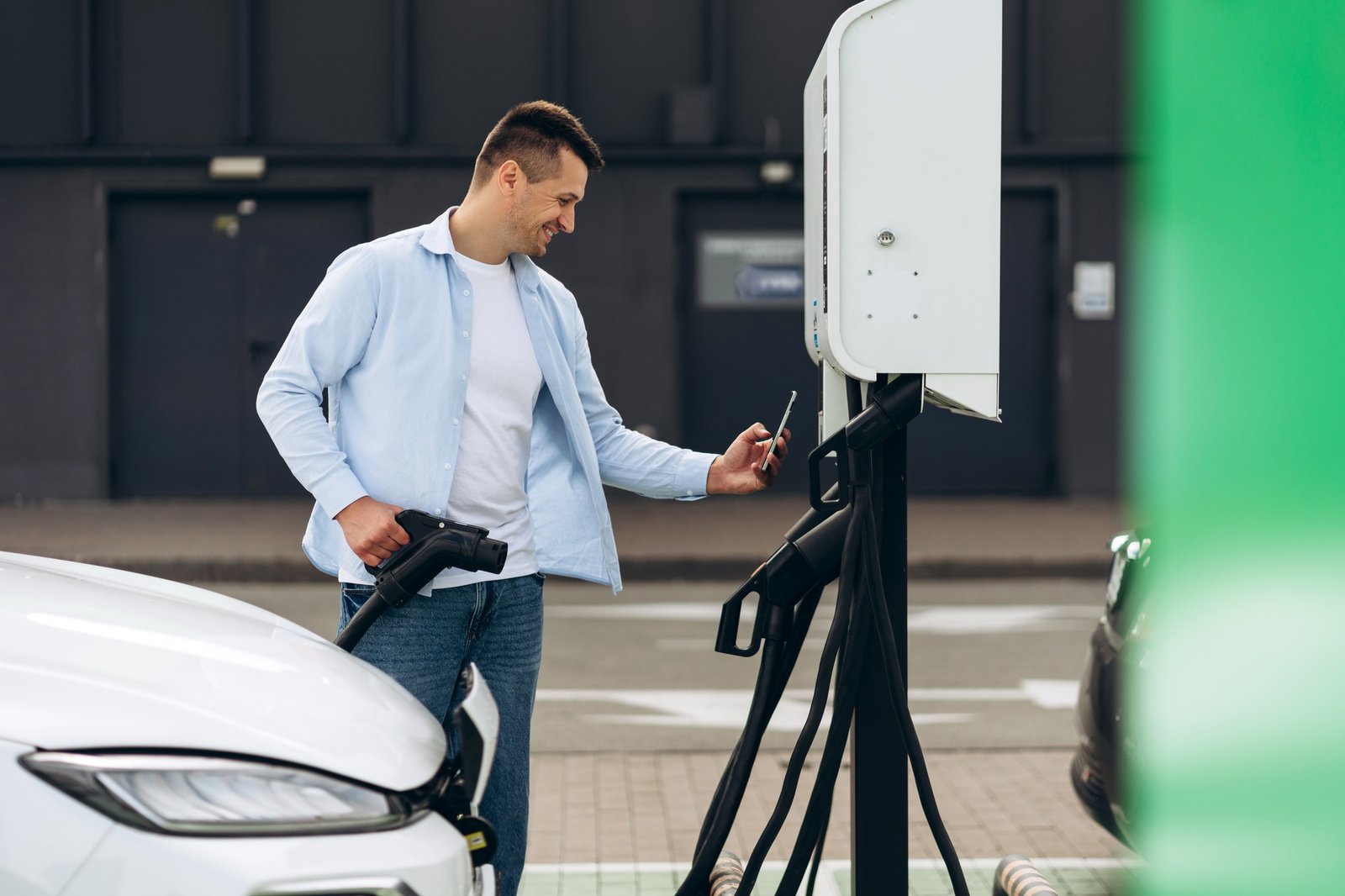Introduction
Charging payments are no longer limited to simple cash payments or traditional credit card payments. Many efficient and convenient payment solutions have been introduced to the market, improving the efficiency of charging stations and enhancing the user experience. This article will provide a detailed analysis of various EV charging payment methods, including credit card payments, app-based payments, and Plug and Charge technology, helping car owners select the most appropriate payment solution based on their individual needs.
What is EV Charging Payment?
An EV charging payment system refers to the use of various payment methods and technologies by car owners while charging electric vehicles. Unlike traditional fuel station payment methods, EV charging payments include advanced payment solutions, which are not limited to traditional physical payment cards, credit cards, and cash, but also involve mobile payments, app-based payments, and other digital solutions.
With the rapid growth of electric vehicles and the increasing number of charging stations, as well as the diversification of user demands, EV charging payment systems are gradually evolving towards more intelligent, digital, and convenient solutions. These payment methods must meet consumer needs while ensuring the efficiency, security, and privacy of the payment process.
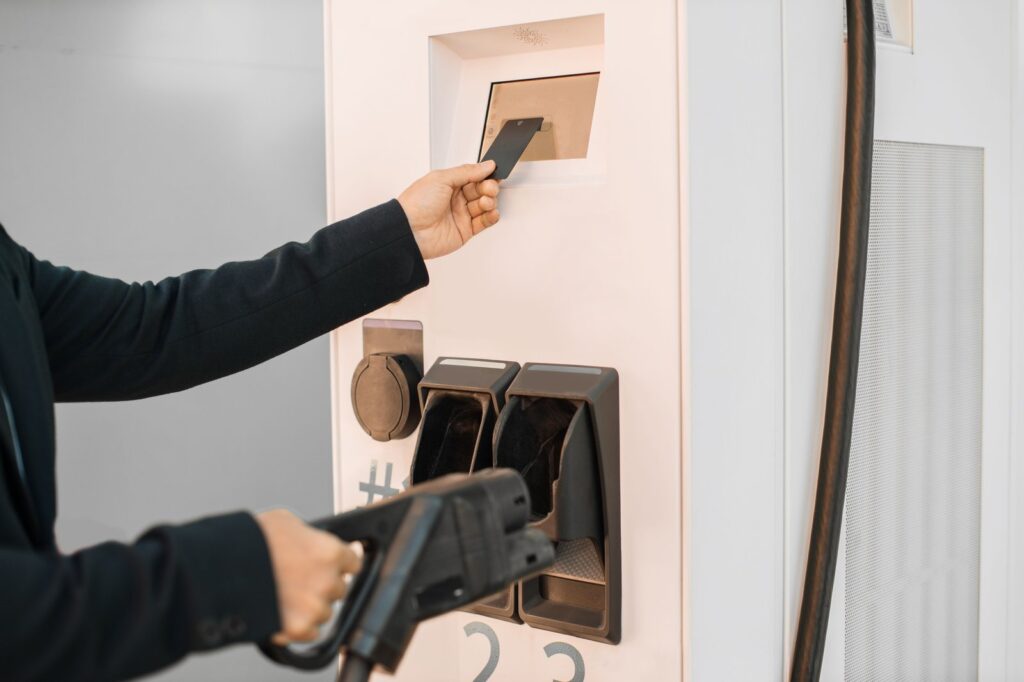
EV Charging Payment Methods
As technology has developed, EV charging payment methods are no longer limited to traditional credit cards or cash. Multiple methods are now available to complete the charging payment, each with its unique advantages and application scenarios.
1.Credit Card Payment
Credit card payments are currently one of the most common EV charging payment methods. Car owners simply swipe or insert their credit cards at the charging station’s payment terminal to complete the payment. Many charging stations are equipped with devices that support credit card payments, allowing car owners to pay directly without needing to download an app or link an account.
This payment method’s advantage is its simplicity and speed, with no additional registration steps or app configuration required. This is especially convenient for occasional users of charging stations. Car owners just need to ensure that their credit card supports international payments, and they can easily complete the payment.
However, despite being common and convenient, credit card payments have some potential drawbacks. For instance, some charging stations may only accept certain types of credit cards. Additionally, some charging station payment terminals might experience device malfunctions or card recognition issues, impacting the smooth payment process.
2.EV Charging Payment App
Due to the widespread use of smartphones, nearly all charging stations now support payments through dedicated EV charging payment apps. These apps typically connect to the charging station’s payment terminal using QR codes, NFC, or Bluetooth technology.
Users need to install the relevant payment app on their smartphones and link it to their bank account, allowing them to complete the charging payment via their phones. EV charging payment apps typically provide additional services such as viewing real-time charging status, historical payment records, and charging cost estimates, greatly enhancing the car owner’s charging experience.
The advantage of this payment method is its greater intelligence and convenience. Car owners do not need to carry cards or cash and can pay anytime, anywhere. Furthermore, through the app, car owners can enjoy rewards, coupons, and more. Additionally, the app usually supports multiple payment methods, including bank cards, Alipay, WeChat, etc., making payment options more diverse and meeting the needs of different users.
However, mobile app payments also have some limitations. For example, some users may not be accustomed to using mobile payments or may not be able to complete payments smoothly in poor network environments. In such cases, traditional credit card or cash payments become alternative options.
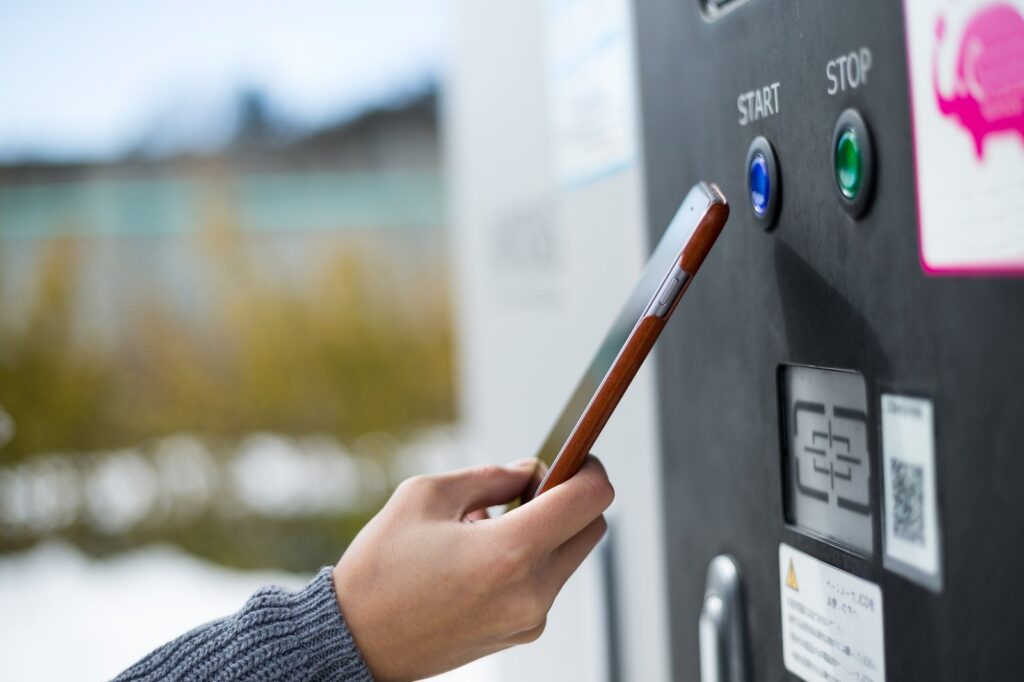
3.Plug and Charge
Plug and Charge technology is a groundbreaking innovation in EV charging payment, allowing car owners to charge their vehicles with almost no manual intervention. Simply plugging the charging gun into the vehicle enables the system to automatically identify the owner’s identity and complete the payment. This process is entirely managed through digital communication between the vehicle and the charging station system.
Plug and Charge is based on the ISO 15118 standard, which ensures privacy and data security while enabling charging payments. This technology eliminates the need for scanning QR codes, swiping cards, and other manual steps and automatically starts and ends the charging session.
The advantage of Plug and Charge is its high convenience and intelligence, particularly suitable for users who frequently need to charge their vehicles. It eliminates manual intervention, allowing car owners to focus on their journey without needing to perform payment actions each time they charge.
However, although Plug and Charge offers a more efficient payment experience, its application is not yet widespread across all charging stations, as many stations do not support this technology. Therefore, Plug and Charge is still considered an emerging technology, gradually developing and entering the market.
4.Pay Monthly EV Charger
For frequent users, Pay Monthly EV Charger is an attractive payment solution. This method allows car owners to sign a long-term agreement with a charging station operator and pay monthly fees for charging services.
This solution is ideal for users who need to charge frequently, such as corporate fleets, taxis, or long-distance personal drivers. With a monthly payment plan, car owners can better manage their costs and avoid repeated payment actions with each charge. Monthly payments typically include added services such as discounts, exclusive charging stations, 24/7 online support, and more, enhancing the overall user experience.
Monthly plans can also offer various packages, such as pay-per-use, scheduled charging, or unlimited charging, allowing car owners to select the plan that best suits their needs, improving the cost-effectiveness of their charging service.
5.Charging Station Payment Terminals
Traditional charging station payment terminals remain widely used across many charging stations. Car owners can find terminal devices at charging stations and pay by swiping cards or scanning QR codes. These terminals typically support multiple payment methods, including credit cards, debit cards, e-wallets, Alipay, WeChat, and more.
The advantage of charging station payment terminals is that they are simple to use and do not require car owners to download any apps. Even car owners without smartphones can complete payments by swiping cards. Additionally, many charging stations provide assistance from on-site staff, making it suitable for users unfamiliar with digital payments.
However, charging station payment terminals also have limitations. In high-traffic stations or older equipment, payment terminals may experience malfunctions or delays, which could affect the charging experience.
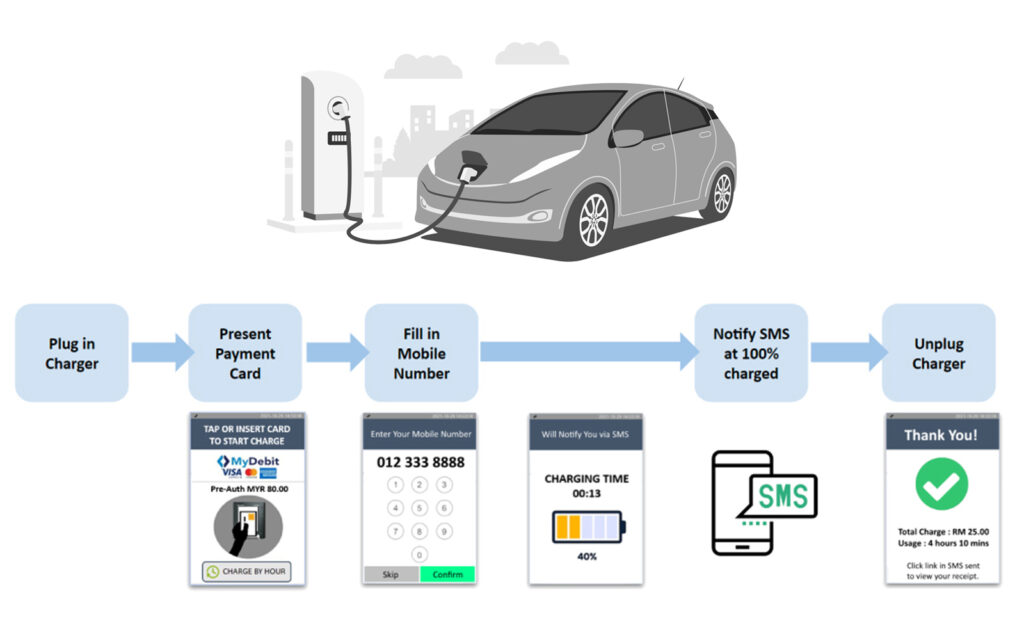
How to Choose the Right Payment Method?
Choosing the right payment method depends not only on convenience but also on charging frequency, security, and cost management needs. The following suggestions can help you select the right payment method based on your personal needs:
- Frequent Users: If you frequently use your EV, it is recommended to choose monthly payment (Pay Monthly EV Charger) or Plug and Charge technology. These methods provide stable cost management and reduce payment waiting time with each charging session.
- Occasional Users: If you don’t frequently use your EV, you can choose credit card payment or an EV charging payment app. These options are simple, flexible, and suitable for users with irregular charging needs.
- Long-Distance Travelers: If you frequently travel long distances, Plug and Charge is an ideal option. It allows you to quickly charge and pay at any charging station without repeated identity verification.
- Digital Experience Enthusiasts: If you prefer managing your charging process through smart devices, using an EV charging payment app is ideal.
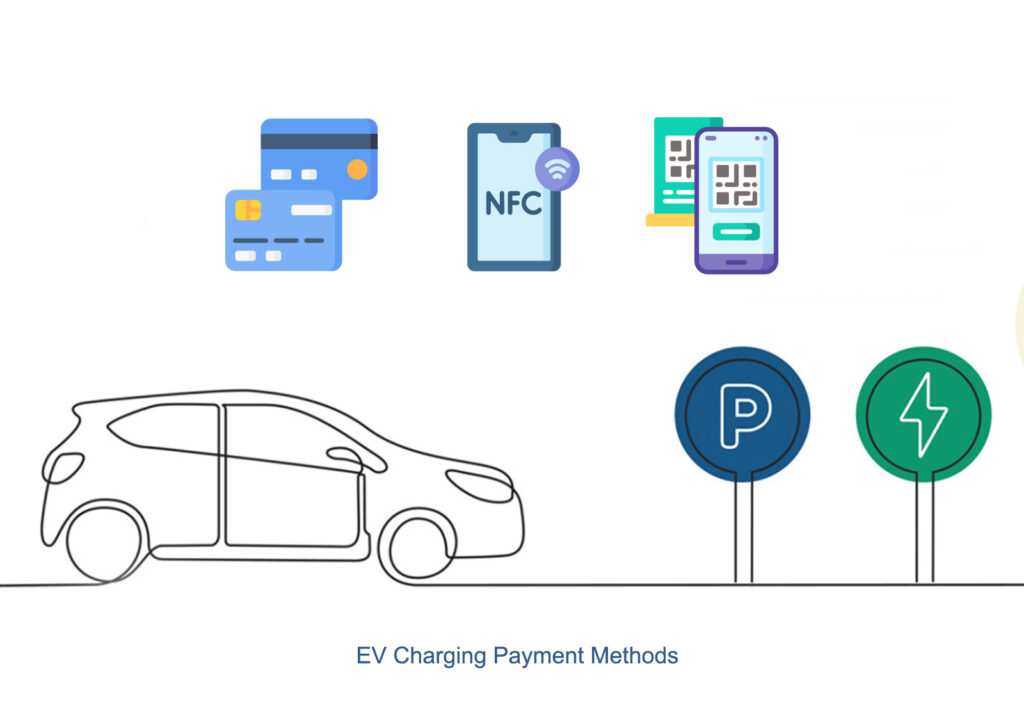
Future Trends of EV Charging Payment Systems
As electric vehicle and charging network technologies rapidly evolve, the future development of charging payments will continue to progress. The following are some future trends:
- Cross-Platform Payments: As the EV charging station network globalizes, charging payment systems will focus more on interoperability between different stations. Car owners will be able to make payments across platforms without worrying about payment methods or account compatibility.
- Smart Contract Integration: The development of blockchain technology makes smart contracts a future trend in charging payments. Smart contracts will allow automatic settlements between car owners and charging stations, ensuring transparency and security in the payment process.
- Green Payment Solutions: With the push for sustainability, future charging payments may integrate with green energy solutions, where car owners can opt to contribute to eco-friendly projects.
- Fully Digital Payment Experience: The digital payment experience will become mainstream in the future. Charging payments will not only be limited to credit cards and mobile apps but will include various IoT-based smart payment methods.
Conclusion
With the thriving development of the electric vehicle industry, EV charging payment systems continue to face new opportunities for growth. Choosing the right payment method not only enhances the car owner’s charging experience but also brings more convenience and benefits to charging station operators. Whether it’s credit card payments, app payments, or innovative technologies like Plug and Charge, each payment method has its unique advantages, and car owners can choose the solution that best fits their needs.

